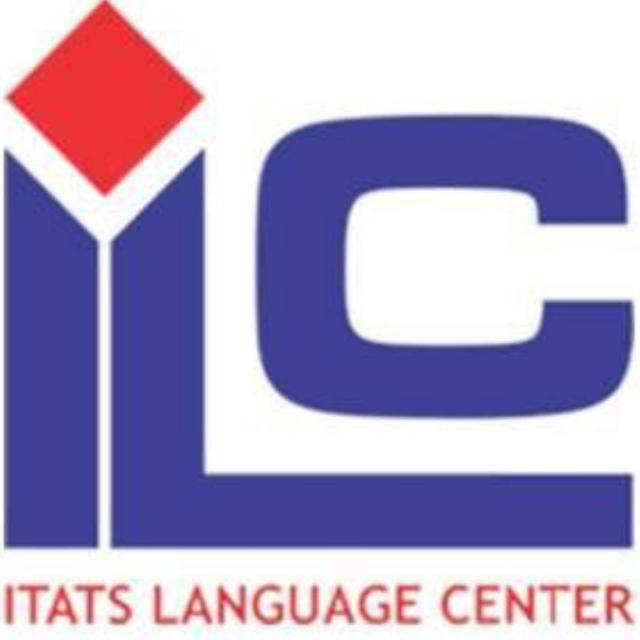Numerical Performance Simulations of Four-Wheeled Cruise-controlled Vehicle on Road Surface
Abstract
Cruise control (CC) has started to be widely used in cars, making driving easier for a long time. However, in designing the control system on the CC, it is also necessary to perform performance testing, so that the CC can achieve the desired speed accurately and comfortably. The approach employed in this paper involves creating a numerical model design based on CC and subsequently assessing its performance through simulations with varying levels of resistance. Variation of resistance given is by road conditions (rolling resistance) and drag coefficient. The test outcomes, when subjected to changes in road surface conditions, demonstrate that CC remains capable of achieving a rapid response time and maintaining a consistent steady-state error of approximately 2.01%. Despite minimal variations observed in the drag coefficient test, the CC-designed model remains dependable in accommodating alterations in road surface and discrepancies in drag coefficients. Furthermore, the resultant vehicle acceleration does not exceed 2G, ensuring passenger comfort is not compromised.
Full Text:
PDFReferences
C. C. Chien and P. A. Ioannu, “Autonomous Intelligent Cruise Control,” IEEE TRANSACTIONS ON VEHICULAR TECHNOLOGY, vol. 42, no. 4, p. 16, 1993.
N. Utomo, “ANALISA FAKTOR PENYEBAB KECELAKAAN LALU LINTAS PADA SEGMEN JALAN BY-PASS KRIAN – BALONGBENDO (KM. 26+000 – KM. 44+520),” vol. 2, no. 2, p. 12, 2012.
H. Herawati, “Karakteristik Dan Penyebab Kecelakaan Lalu Lintas Di Indonesia Tahun 2012,” warlit, vol. 26, no. 3, p. 133, Jan. 2019, doi: 10.25104/warlit.v26i3.875.
A. D. Saputra, “Studi Tingkat Kecelakaan Lalu Lintas Jalan di Indonesia Berdasarkan Data KNKT (Komite Nasional Keselamatan Transportasi) dari Tahun 2007-2016,” warlit, vol. 29, no. 2, p. 179, Jul. 2018, doi: 10.25104/warlit.v29i2.557.
P. Szikora and N. Madarasz, “Self-driving cars — The human side,” in 2017 IEEE 14th International Scientific Conference on Informatics, Poprad: IEEE, Nov. 2017, pp. 383–387. doi: 10.1109/INFORMATICS.2017.8327279.
E. Shi, T. M. Gasser, A. Seeck, and R. Auerswald, “The Principles of Operation Framework: A Comprehensive Classification Concept for Automated Driving Functions,” SAE Intl. J CAV, vol. 3, no. 1, pp. 12-03-01–0003, Feb. 2020, doi: 10.4271/12-03-01-0003.
D. A. Patriawan, B. P. Natakusuma, A. A. Arifin, H. S. Maulana, and H. Irawan, “Uji Presisi dari Nonholonomic Mobile Robot pada Rancang Bangun Sistem Navigasi,” Journal of Mechanical Engineering, vol. 1, p. 10, Apr. 2021.
J. Fayyad, M. A. Jaradat, D. Gruyer, and H. Najjaran, “Deep Learning Sensor Fusion for Autonomous Vehicle Perception and Localization: A Review,” Sensors, vol. 20, no. 15, p. 4220, Jul. 2020, doi: 10.3390/s20154220.
M. Ulum, D. A. Patriawan, and M. Nizar, “Modeling and Performance Testing of Anti-Lock Braking System (ABS) with Variation of Road Friction Coefficient to Braking Distance,” Rekayasa, vol. 15, no. 3, pp. 340–345, Dec. 2022, doi: https://doi.org/10.21107/rekayasa.v15i3.16561.
J. Ploeg, B. T. M. Scheepers, E. van Nunen, N. van de Wouw, and H. Nijmeijer, “Design and experimental evaluation of cooperative adaptive cruise control,” in 2011 14th International IEEE Conference on Intelligent Transportation Systems (ITSC), Washington, DC, USA: IEEE, Oct. 2011, pp. 260–265. doi: 10.1109/ITSC.2011.6082981.
V. Milanes, S. E. Shladover, J. Spring, C. Nowakowski, H. Kawazoe, and M. Nakamura, “Cooperative Adaptive Cruise Control in Real Traffic Situations,” IEEE Trans. Intell. Transport. Syst., vol. 15, no. 1, pp. 296–305, Feb. 2014, doi: 10.1109/TITS.2013.2278494.
K. Sailan and Klaus. D. Kuhnert, “Modeling and Design of Cruise Control System with Feedforward for all Terrian Vehicles,” in Computer Science & Information Technology ( CS & IT ), Academy & Industry Research Collaboration Center (AIRCC), Nov. 2013, pp. 339–349. doi: 10.5121/csit.2013.3828.
J. Balkwill, Performance vehicle dynamics: engineering and applications. Butterworth-Heinemann, 2017.
T. Szirtes and P. Rózsa, Eds., “CHAPTER 18 - FIFTY-TWO ADDITIONAL APPLICATIONS,” in Applied Dimensional Analysis and Modeling (Second Edition), Second Edition.Burlington: Butterworth-Heinemann, 2007, pp. 527–657. doi https://doi.org/10.1016/B978-012370620-1.50024-1.
J. Ai, J.-F. Chen, J. M. Rotter, and J. Y. Ooi, “Assessment of rolling resistance models in discrete element simulations,” Powder Technology, vol. 206, no. 3, pp. 269–282, Jan. 2011, doi: 10.1016/j.powtec.2010.09.030.
U. Sandberg et al., Rolling resistance: basic information and state-of-the-art on measurement methods. Final version. Statens väg-och transportforskningsinstitut, 2011.
L. G. Andersen, J. K. Larsen, E. S. Fraser, B. Schmidt, and J. C. Dyre, “Rolling Resistance Measurement and Model Development,” J. Transp. Eng., vol. 141, no. 2, p. 04014075, Feb. 2015, doi: 10.1061/(ASCE)TE.1943-5436.0000673.
D. E. Hall and J. C. Moreland, “Fundamentals of Rolling Resistance,” Rubber Chemistry and Technology, vol. 74, no. 3, pp. 525–539, Jul. 2001, doi: 10.5254/1.3547650.
B. Wen, G. Rogerson, and A. Hartke, “Correlation Analysis of Rolling Resistance Test Results from SAE J1269 and J2452,” presented at the SAE 2014 World Congress & Exhibition, Apr. 2014, pp. 2014-01–0066. doi: 10.4271/2014-01-0066.
A. Hölzer and M. Sommerfeld, “New simple correlation formula for the drag coefficient of non-spherical particles,” Powder Technology, vol. 184, no. 3, pp. 361–365, Jun. 2008, doi: 10.1016/j.powtec.2007.08.021.
G. I. Kelbaliyev, “Drag coefficients of variously shaped solid particles, drops, and bubbles,” Theor Found Chem Eng, vol. 45, no. 3, pp. 248–266, Jun. 2011, doi: 10.1134/S0040579511020084.
N.-S. Cheng, “Comparison of formulas for drag coefficient and settling velocity of spherical particles,” Powder Technology, vol. 189, no. 3, pp. 395–398, 2009.
R. Rajamani and C. Zhu, “Semi-autonomous adaptive cruise control systems,” IEEE Trans. Veh. Technol., vol. 51, no. 5, pp. 1186–1192, Sep. 2002, doi: 10.1109/TVT.2002.800617.
W. Pananurak, S. Thanok, and M. Parnichkun, “Adaptive cruise control for an intelligent vehicle,” in 2008 IEEE International Conference on Robotics and Biomimetics, Bangkok: IEEE, Feb. 2009, pp. 1794–1799. doi: 10.1109/ROBIO.2009.4913274.
S. Bennett, “Development of the PID controller,” IEEE Control Syst., vol. 13, no. 6, pp. 58–62, Dec. 1993, doi: 10.1109/37.248006.
R. P. Borase, D. K. Maghade, S. Y. Sondkar, and S. N. Pawar, “A review of PID control, tuning methods and applications,” Int. J. Dynam. Control, vol. 9, no. 2, pp. 818–827, Jun. 2021, doi: 10.1007/s40435-020-00665-4.
D. A. Patriawan, B. Pramujati, and H. Nurhadi, “Preliminary Study on Magnetic Levitation Modeling Using PID Control,” Applied Mechanics and Materials, vol. 493, pp. 517–522, Jan. 2014, doi: 10.4028/www.scientific.net/AMM.493.517.
B. Pramujati, H. Nurhadi, and D. A. Patriawan, “A Study on the Effect of an Attractive and a Repulsive Forces with Feedback Control on a Magnetic Levitation System,” International Journal of Scientific & Engineering Research, vol. 6, no. 6, p. 5, 2015.
Z. Wang and C. Zhu, “Active Control of Active Magnetic Bearings for Maglev Flywheel Rotor System Based on Sliding Mode Control,” in 2016 IEEE Vehicle Power and Propulsion Conference (VPPC), Hangzhou, China: IEEE, Oct. 2016, pp. 1–6. doi: 10.1109/VPPC.2016.7791603.
W.-R. Wang, J.-H. Yan, and G.-J. Yang, “Adaptive predictive control based on ship magnetic levitation damping device,” Journal of the Chinese Institute of Engineers, vol. 45, no. 2, pp. 138–149, 2022.
R. Vilanova, “IMC based Robust PID design: Tuning guidelines and automatic tuning,” Journal of Process Control, vol. 18, no. 1, pp. 61–70, Jan. 2008, doi: 10.1016/j.jprocont.2007.05.004.
H. O. Bansal, R. Sharma, and P. R. Shreeraman, “PID Controller Tuning Techniques: A Review,” Journal of Control Engineering and Technology, vol. 2, 2012.
A. A. Muntashir, E. Purwanto, B. Sumantri, H. H. FAkhruddin, and R. A. N. Apriyanto, “Static and Dynamic Performance of Vector Control on Induction Motor with PID Controller: An Investigation on LabVIEW,” AE, vol. 4, no. 2, pp. 83–96, May 2021, doi: 10.31603/ae.4812.
M. N. A. Mohd Norzam, J. Karjanto, N. Md. Yusof, M. Z. Hassan, A. F. Hakim Zulkifli, and A. A. Ab Rashid, “Analysis of User’s Comfort on Automated Vehicle Riding Simulation using Subjective and Objective Measurements,” AE, vol. 5, no. 2, pp. 238–250, May 2022, doi: 10.31603/ae.6913.
H. Z. Tan, B. Eberman, M. A. Srinivasan, and B. Cheng, “HUMAN FACTORS FOR THE DESIGN OF FORCE-REFLECTING HAPTIC INTERFACES,” vol. 55, no. 1, pp. 353–359, 1994.
DOI: https://doi.org/10.31284/j.jmesi.2023.v3i2.5310
Refbacks
- There are currently no refbacks.

This work is licensed under a Creative Commons Attribution-NonCommercial 4.0 International License.
Published by:
Mechanical Engineering Department - Institut Teknologi Adhi Tama Surabaya
Editorial Address
Journal of Mechanical Engineering, Science, and Innovation is licensed under CC BY-NC 4.0








